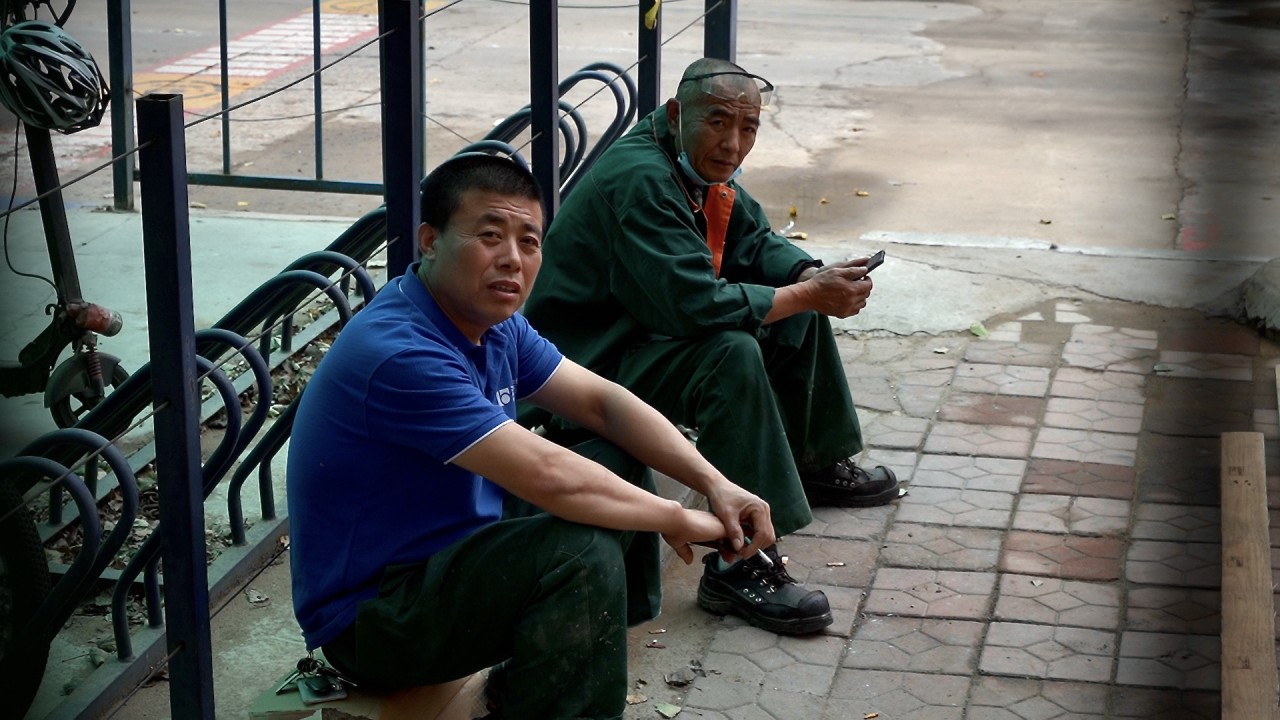
China trade: export growth stronger than expected in September but ‘instabilities, uncertainties’ remain
- China’s exports grew by 28.1 per cent in September compared with a year earlier, up from 25.6 per cent growth in August
- China’s imports rose by 17.6 per cent last month, year on year, down from 33.1 per cent growth in the previous month
China’s exports rose more than expected in September, data released on Wednesday showed.
This was above the median result of a survey of analysts conducted by Bloomberg, which had predicted 21.5 per cent growth.
Imports rose by 17.6 per cent in September from a year earlier, to US$238.98 billion – down from the 33.1 per cent growth in August, according to data from China’s General Administration of Customs.
This was below the result of the Bloomberg survey, which had predicted 20.9 per cent growth. In the same month last year, exports rose by 13.2 per cent.
China’s total trade surplus stood at US$66.76 billion in September, compared with a revised US$58.33 billion in August.
In the first nine months of the year, China’s exports rose by 23.86 per cent year on year to US$882.72 billion, down from the 30.4 per cent growth seen in the first half of the year and down from the 48.81 per cent growth seen in the first quarter.
Imports in the first nine months of the year rose by 26.45 per cent year on year to US$701.04 billion, down from the 43.65 per cent growth seen in the first half of the year and down from the 27.62 per cent growth seen in the first quarter.
China’s trade is still facing many instabilities and uncertainties
“We think that on the whole, there are both many favourable and unfavourable factors affecting the trade,” said Chinese customs spokesman Li Kuiwen.
“The continuing recovery of the domestic economy provide a solid foundation for the sustained growth of trade. The global economy and trade have picked up and the increase of demand in the global market has benefited China’s exports. The rise in international commodity prices has pushed up the value of imports.”
Goldman Sachs lowered their economic growth forecast for China this year to 7.8 per cent from 8.2 per cent, citing recent sharp cuts to production in a range of high-energy-intensive industries. The World Bank, though, actually raised its China growth forecast to 8.5 per cent growth this year, compared with 8.1 per cent forecast in April.

04:01
Chinese manufacturing thrown into disarray as country's electricity crisis rolls on
Shipping problems have exerted the single biggest pressure on China’s exports and will continue to do so next year, according to analysts.
Among trading partners, the 10 countries of the Association of Southeast Asian Nations (Asean) continued to be China’s largest, followed by the European Union and the United States.
China’s exports to the 10 Asean countries rose to US$40.36 billion in September, up by 17.33 per cent compared with a year earlier, while imports rose by 17.28 per cent to US$36.19 billion. China’s trade surplus with the Asean states widened by 17.7 per cent year on year to US$4.18 billion in September.
China’s imports from the US rose by 16.6 per cent to US$15.4 billion in September, while exports rose by 30.56 per cent to US$57.4 billion.
China’s exports to the European Union rose by 28.61 per cent from a year earlier to US$44.47 billion in September, while imports rose by 1.13 per cent to US$25.97 billion. China’s trade surplus with the European Union last month stood at US$18.50 billion, narrowing from US$20.95 in August.
This suggests that the hit from power rationing has largely been confined to a few energy-intensive industries and did not hold back wider manufacturing activity as many had feared
Elsewhere, China’s exports to Australia rose by 23.77 per cent to US$5.96 billion in September, while imports from Australia rose by 50.72 per cent to US$15.04 billion last month. China’s trade deficit with Australia widened by 75.88 per cent to US$9.07 billion.
“September exports beat even our above-consensus expectations. Coupled with separate data showing that electricity consumption held up well last month, this suggests that the hit from power rationing has largely been confined to a few energy-intensive industries and did not hold back wider manufacturing activity as many had feared,” said Julian Evans-Pritchard, senior China economist at Capital Economics.
“The resilience of exports adds to growing evidence that power shortages did not deal much of a blow to China’s manufacturing sector last month. The National Energy Administration published data [on Wednesday] showing that growth in electricity consumption in industry rose from 0.6 per cent year on year in August to 6.0 per cent last month, implying a pickup in seasonally adjusted month-on month terms.
“This is consistent with the theory we put forward a couple of weeks ago that power rationing has been due to power companies being unable to meet rising demand, rather than a pullback in overall electricity supply.”

